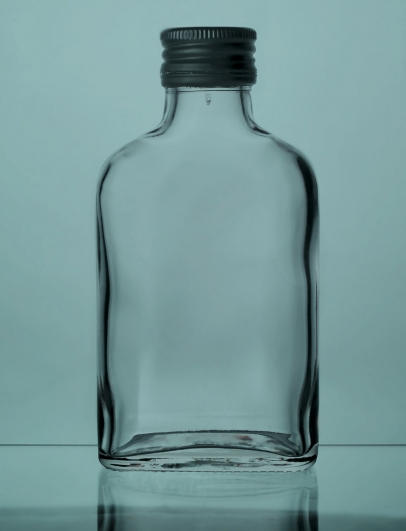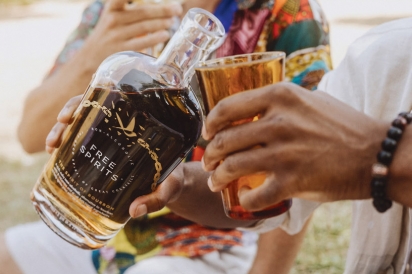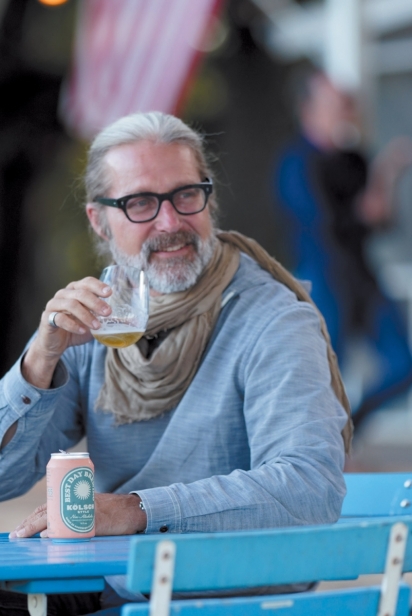The Emerging World of Alcohol-Free Beverages
The sober-curious and others are diving into new zero-ABV beverages deserving of their own bar menu.
Are you sober-curious?
In her 2018 book by that name, Ruby Warrington asked the question: What if you stopped drinking “on autopilot?” She posits that by raising our consciousness about why we drink alcohol, we can reexamine our relationship to alcohol. And by reexamining our relationship to alcohol, we can make different choices about when, how and what we drink. The book has been credited with kick-starting the sober-curious movement, which shifted into a different gear during the pandemic’s early phases.
In the four years since the book’s release, businesses around the country have stepped into the nonalcoholic (NA) beverage space, supplying the sober-curious and mindful others with a broader range of options than had previously existed.
That First-Cocktail Feeling
Milan Martin, founder and CEO of Mill Valley—based Free Spirits, became sober-curious in 2019. The “work hard, drink harder” ethos of the London, New York and San Francisco advertising agency culture he was a part of was consuming him. “I had my dream job running Grey Advertising and alcohol became the answer to everything,” Martin said. “The cocktail was such an essential piece of it. We’d be at a cool bar with a great environment and when your glass is empty, no one wants to switch to seltzer water because it indicates you are done and that is the last thing you want to be when the conversation is flowing.”
Realizing that he was chasing the feeling of the first cocktail— the ritual of the cocktail’s construction, the story of an aged bourbon, the burn of tequila on the back of his throat, the conversational comfort level American culture provides when you have a drink in your hand—but drinking many more— Martin took a step back.
He did a dry month. He drank a lot of seltzer with nice garnishes and nice ice. “And it sucked,” he said. “There was no complexity, no burn, no interesting story, no mixing, no excitement.” Martin had his a-ha moment—he wanted the experience of a cocktail without the alcohol—and Free Spirits was born.
Martin emphasized that his company, launched in 2020, is not anti-alcohol and he is not a teetotaler. Instead, Free Spirits’ bourbon, tequila and gin are designed not to be drunk as a shot, but to make cocktails without the negative impacts of booze. “It’s about giving people control,” Martin said.
California Lifestyles Call for Beer Without the Buzz
Tate Huffard of Sausalito’s Best Day Brewing was aware of the sobriety angle when he launched a nonalcoholic beer business, but his approach canted towards NorCal’s outdoor-focused, up-early-to-hike culture. In our interview, Huffard spoke of the societal norm of over-consumption of alcohol, especially beer, in high school and college, but, as an adult, his shift into mountain biking, skiing and surfing inspired him to rethink his approach to drinking.
“You have that moment in your late 20s or early 30s where jobs get more demanding and sometimes you have a wife and kids and you can’t do it with a hangover,” he said. An exploration of the options available at the time left him cold. “The options then were really terrible,” Huffard said. He needed a beverage that brought people together like a locally brewed craft beer does, a drink that had the same celebratory nature as beer but without the alcohol. Finding the market lacking, he and a few fellow beer lovers set out to develop a great-tasting beer that would fit into their California lifestyle.
“It had to taste like the real thing,” he said. Earlier this year, six years after his own “moment,” Huffard and Best Day Brewing launched a Kolsch and an IPA nonalcoholic beer onto the market.
Technology Plays a Part
While Huffard was unwilling to reveal the exact technology he uses to remove the alcohol from beer, he insisted that Best Day brews a full beer and does not use vacuum distillation, a popular technique for removing alcohol from wine. “We found a technology and a technique that can remove the alcohol from the beer without affecting the aromas or the flavors of the beer,” he said.
“Vacuuming” or vacuum distillation is a process that applies heat to the wine, beer or spirit, usually around 85°—95°F, in a high-pressure chamber. A first pass removes volatile compounds (which can be reintroduced later to restore the natural flavors and aromas) while a second pass removes the alcohol via evaporation.
Another method, “spinning cones” or “the spinning cones method,” uses centrifugal force and steam to remove alcohol. Fast and effective, finished wine is added to the top of the device and the force applied to the wine strips out the volatile compounds on the first pass. A second pass removes the alcohol, or “de-alcoholizes” it.
Terminology and Regulations
Terminology here is important. “De-alcoholized” means the product previously contained alcohol that has been removed. In the case of de-alcoholized wine, beer and spirits, the resulting product must be no more than 0.5% alcohol by volume (ABV) to be labeled “non alcoholic.” The term “alcohol-free” indicates the liquid has not gone through a fermentation process. For example, juice and milk are alcohol-free. Commercially produced kombucha is “nonalcoholic” if the ABV is 0.5% or less, the legal standard for a beverage to be labeled nonalcoholic. These products are often referred to as “NA”: NA wine, NA beer, etc.
The governing bodies that regulate NA products rely on these distinctions to categorize any product and determine which rulebook the product needs to follow. The Food & Drug Administration (FDA) typically regulates beverage companies that are alcohol-free, while the Alcohol and Tobacco Tax and Trade Bureau (TTB) regulates any beer, wine or spirit product that is produced in the same fashion as their conventional cousins (aka fermentation) before the alcohol is removed. Standardization of the nonalcoholic industry is a goal that NA beverage businesses strive for. The Adult Non-Alcoholic Beverage Association is at the forefront of the movement, seeking to serve as a unifying voice in the quickly growing industry.
What That Means for Sovi’s NA Wine
Co-founders and spouses Julia and Alex Littauer of Napa’s Sovi Wine Co. chose vacuum distillation for their de-alcoholized wines. With their extensive background in the wine industry, they had seen the benefits of this system to reduce the alcohol in some wines. Wines that came in hot—over 17% alcohol, say— could be vacuum-distilled to bring the alcohol level down to a more tax- and human biology—friendly 14%. Could they make a delicious de-alcoholized wine using the same technology?
“There was a lot of experimenting,” said Julia. “Initially, we thought about adding natural flavors and adding more sugar than we do, but it didn’t sit right. We wanted it to be as wine-like as possible.” Sovi’s first release in March 2021 was a sparkling rose. “We do add a small amount of sugar for balance, like a dosage in Champagne,” Julia said. (Unlike Champagne, however, de-alcoholized wine must be carbonated after the alcohol is removed.) Throughout the process of developing their NA wines, the Littauers cultivated relationships with grape growers, the key to making the best possible wine as so much of wine’s flavors and aromas are developed in the vineyard. They are striving for consistency so that when the alcohol is removed, the product is as good as the finished wine was when it entered their production facility.
Designing a de-alcoholized red wine was most challenging. “The varietals don’t always work by themselves,” Julia said. “A Cabernet on its own might not work well when de-alcoholized. Body, acidity, aromas—we found it by blending.” Their grapes are grown in Clarksburg, about 40 miles east of Napa, a region with cold mornings (great for maintaining acidity) and hot summer days (good for ripeness without getting overly ripe). The sparkling rose is lighter and more elegant, while the red is bigger and juicier in style. A sparkling Chenin Blanc arrived on the market in April.
Studio Null’s International Approach
As they got older, co-founders and wine lovers Catherine Diao and Dorothy Munholland of San Francisco’s Studio Null recognized enough times when they were socializing or having a fine-dining experience but didn’t want to drink more than a glass of wine that they needed different options. What was already out there? The duo, who had each spent time in Europe, saw the sizeable market for NA beer and wines in Europe and figured it was time to bring these products to the States.
The “studio” part of their brand signifies a place to work with talented winemakers and artists and reflects a collaborative concept that, just as wines vary vintage to vintage, Studio Null will release different wines each year. “It’s not formulaic, not a ‘soda of wines,’ but beautiful wines with vine-to-glass transparency,” said Diao.
Hitting the market earlier this year, Studio Null’s three current releases include a sparkling rose from Rheinhessen, Germany, made with Silvaner and Portugieser grapes; a Blanc Burgunder of Pinot Gris and Pinot Blanc from the Rhineland-Palatinate region of Germany; and a “Prickly Red” blended with Spanish Tempranillo and Syrah. “There was a lot of trial and error,” said Diao. “What has held true is that quality in equals quality out. We are focusing on premium sourcing and working with partners that are open to this kind of collaboration.”
It’s Complicated
Studio Null’s wines, imported from two different European countries, faced a unique set of barriers. Before they could import any wine, the team had to connect with U.S. customs as there was no specific, harmonized tax code for de-alcoholized wine. (There was one for beer.) “It is an interesting grey area,” said Diao. “[Dealcoholized wine] is still pretty uncommon as a product so there is no systematic way to deal with issues as they come up.” As with other products, international, federal and state regulatory groups are a step behind the action on the ground.
Studio Null chose to work with European family-run wineries and other partners that specialize in de-alcoholization, a different approach than systems currently in place in the American wine industry. Supply chain transparency was important, and the team spoke of “bringing in the cone,” another expression used to describe the spinning cones technique of alcohol removal while maintaining a wine’s unique terroir.
“I think the presumption is that when there is more aromatic presence, more body, that there is more to trap there,” Munholland said. “But it’s a double-edged sword. If you have the expectation that a full-bodied wine with big expression will compare glass to glass, you can’t, because there is more to lose in the process.”
Adding Instead of Removing
Free Spirits starts with pure ingredients, combining them to deliver the same experience expected from the alcoholized version of the spirit. “We wanted nose and mouthfeel and taste,” Martin said. “We wanted the burn of alcohol.”
Steam-distilling whole ingredients like agave, vanilla, coriander and juniper berries, for the brand’s NA bourbon, tequila and gin, was part of it. Adding pepper essences was another component. Martin and his team struggled with how to build the flavor without adding alcohol or significant amounts of sugar, two effective flavor carriers on the human palate. Excellent botanical inputs yielded the aromatics and colors they were after. And though there is some sugar added (no artificial sweeteners or sugar alcohols), a serving size of 1.5 ounces contains less than one gram of sugar and a mere five calories.
Betera, a San Rafael—based alcohol-free beverage company launched at the end of 2020, looked at great aperitifs and how they are made before building a “better botanical” beverage. Founder, CEO and wine industry vet Nick Benz, along with co-founders Aaron Sanchez and chef Paul Eschbach (who spent 20 years cheffing in the Jean Georges universe in New York and Shanghai), sought to build a beverage that holds its place during cocktail hour, works well with food and looks great on the table.
“We pulled on years of experience working in classic French cooking and influence from other experiences and put together unique botanicals to create all-day-occasion beverages” Benz said.
The Betera team starts with the ingredients—a whole rhubarb root or hibiscus flower, for instance—looking for the taste profile of the botanical itself. The chosen botanicals are then brewed and pumped over (a winemaking process) for maximum flavor, aroma and color extraction—at 190°F for 20—30 minutes. “From there, we lightly sweeten with organic cane sugar and dilute so it reaches the right brix and pH,” said Benz. The beverages are then carbonated, bottled and pasteurized.
Three flavors—Rhubarb-Hibiscus, Ginger-Orange and Elderflower- Lime—met the trio’s demand for a brightly colored and flavored beverage that evoked mouthwatering visual appeal. Like other entrepreneurs with culinary backgrounds, Benz spoke glowingly of citrus peel’s qualities, but it was rhubarb root that hooked him. “Rhubarb root has a lot of nutrients that never get activated when you only utilize the stalk,” he said. “But for centuries, the roots were used for medicinal purposes like their high antioxidant, anti-inflammatory characteristics.” In years past, aperitifs were used to kick-start the digestive system before a hearty meal and that is the intent here, minus the glycemic load of sugar. The drinks come in at about four grams of sugar and 16 calories per 12-ounce (355 ml) bottle.
Building Out the Drinks Menu
If this wave of “mindful drinking” picks up even greater momentum, as it looks to do, restaurateurs and bar managers are going to have to spend some quality time with the section of their menus that has heretofore been largely filled with sugary kids’ drinks and sodas. These newly concocted alcohol-free beverage choices deserve more—maybe even their own menu section. How about “Low- and No-ABV Drinks?” Or “Less Sugar, More Flavor?” Or, as Martin suggested, “anything you and your bartender can dream up can be made Free Spirits.” Just please, for the love of Pete, don’t call it a mocktail.
Best day
Mill Valley resident Tom Lamar got sober as a challenge. “I figure in six years of not drinking, I could have enough [by saving what I spent on cocktails] to own a Porsche,” Lamar said. Excited about how good he felt without consuming alcohol, he organized a group he dubbed “ Connect with Clarity and Consciousness” that gathers once a month at Watershed restaurant in the Mill Valley Lumberyard. Watershed’s bar manager, Steve Turner, is a brand ambassador for Free Spirits and offers an array of alcohol-free cocktails on the restaurant’s bar menu.










